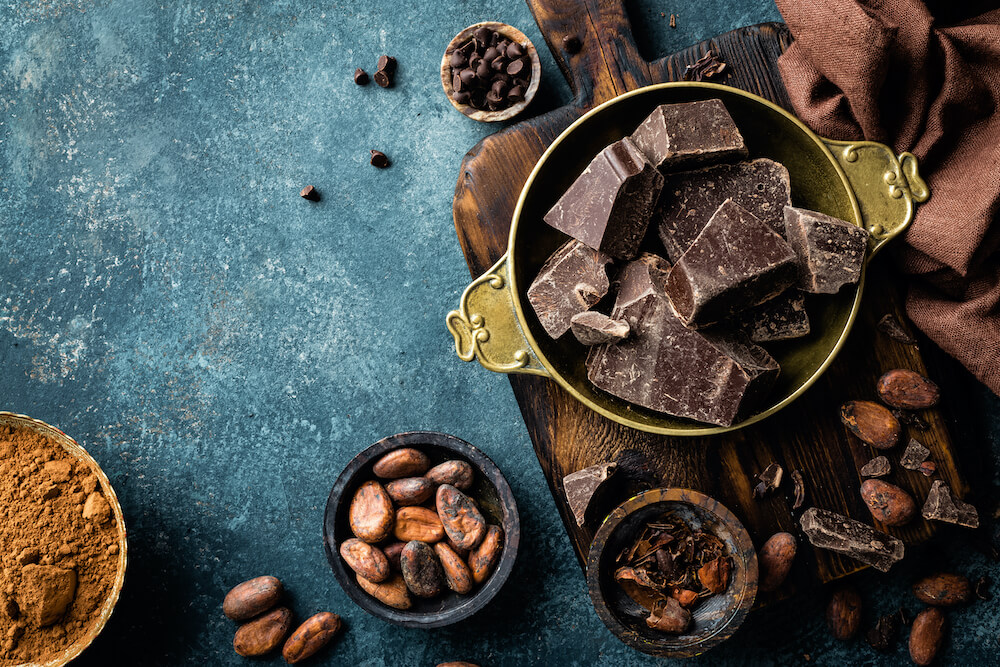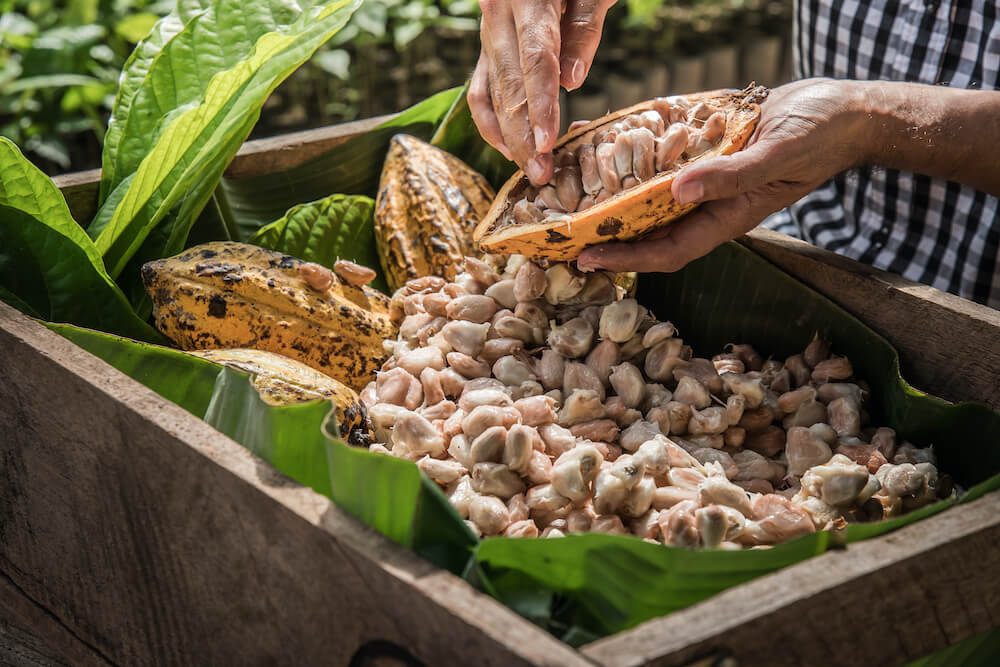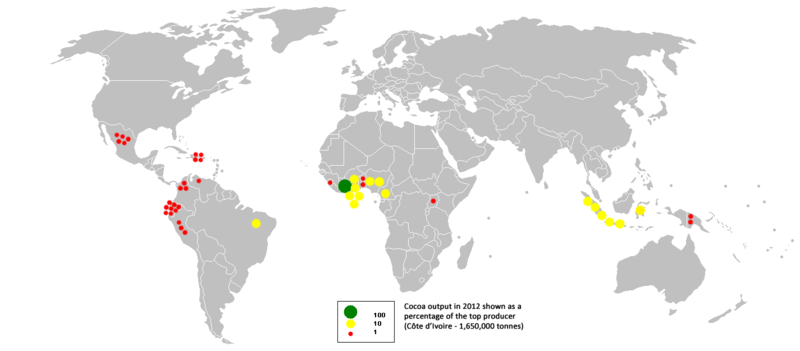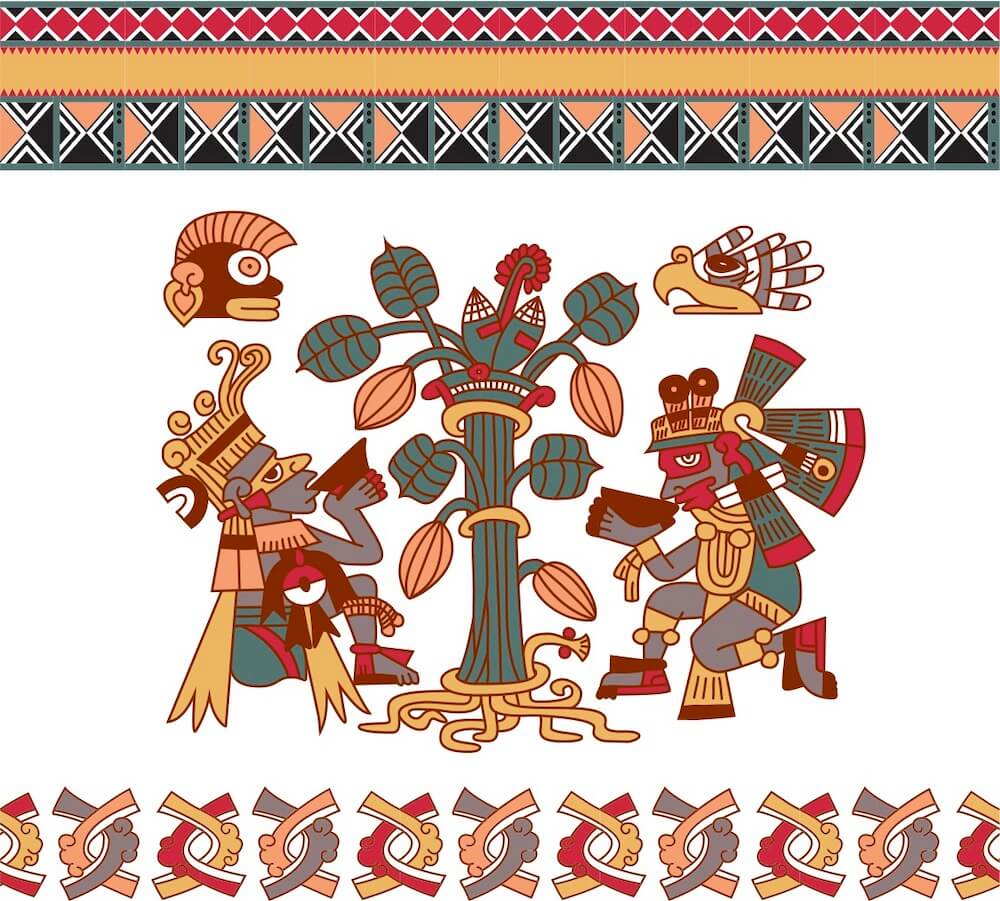The dark side of the chocolate industry
Many industries raise concerns about sustainability and ethical issues. Still, chocolate has it especially bad, with hardly any improvement in sight.

The chocolate industry that collects an estimated $103 billion in sales annually, has numerous issues, and many of them come from the way the raw materials, specifically cocoa, are sourced.
Unlike other crops which are grown and harvested with the help of agricultural machinery, cocoa is still predominantly grown by handwork of small farmers in the regions of the global south.
The reports of slavery, child labor, poverty, extreme working conditions, and environmental damage are almost certainly part of every chocolate bar we purchase.
Where does cocoa come from?
Cocoa is the fruit of cocoa trees—massive trees about 20 meters (60 or more feet) high–whose flowers, when pollinated, create pods filled with cocoa beans as well as the pulp. Dried and roasted (or fermented) beans acquire the aromas necessary for developing flavor.
The cocoa tree, or Theobroma cacao, requires hot moist conditions, with soil moisture being particularly vital. Most of the world’s cocoa is grown within eight degrees of the equator.

World’s largest cocoa-producing regions are West Africa, with Ivory Coast responsible for almost 30% of the global share of cocoa; Asia and Oceania, with Indonesia becoming the second-largest cocoa producer in the world; South America, where the plant, Theobroma cacao, actually comes from.

There, the history of cocoa, fermented and drunk as a beverage, extends to thousands of years. Many Mesoamerican civilizations made fermented drinks from cocoa beans.
Olmecs, a civilization dating approximately 2,500-400 BCE, allegedly used cocoa drinks for ceremonial and medicinal use, with no records detailing personal use.
Mayans likely adopted cocoa from Olmecs and revered it, linked it to the gods, specifically the cocoa god Ek Chuah honored in a yearly festival with offerings and rituals. Cocoa took part in everything from official ceremonies to medicine, and a vessel containing cocoa was considered an honorable gift.
In 1100-1521 AD, Aztec civilization, like Mayans, also believed that cocoa is the gift of gods, and enjoyed a spicy drink made from it and served in ornate cups.
Like Mayans, they would dry fresh cocoa beans to draw out the flavor, roast them and grind them to a paste. It will then be made into a drink with water flavored with flowers, vanilla pods, and chilies; Aztecs rarely sweetened the drink.

Aztecs used cocoa beans as currency to buy food and other goods. In Aztec culture, cocoa beans were of more value than gold. In that society, cocoa consumption was mostly an upper-class extravagance, unlike in Mayan civilization, where it was available to everyone. Although the lower classes enjoyed cocoa occasionally at weddings or other celebrations, and it was also included in military rations.

While Aztecs did not grow cocoa by themselves and imported it, it quickly became central to their trading empire. When Aztecs conquered peoples that grew cacao beans, they made those peoples pay tax in those very beans or, as the Aztecs called it, a tribute.
How did cocoa get to Europe?
Some accounts state that at the beginning of the Spanish conquest Hernando Cortez was introduced to cocoa in the court of Montezuma II, who reportedly drank gallons of chocolate daily for energy and as an aphrodisiac.

After the Spanish conquest of the continent, cocoa was shipped back to Europe, where it became a favorite indulgence of the Spanish court. For a long time, they prepared it in the same way as Aztecs and Mayans did, by grinding fermented beans into a paste and flavoring them with spices.
